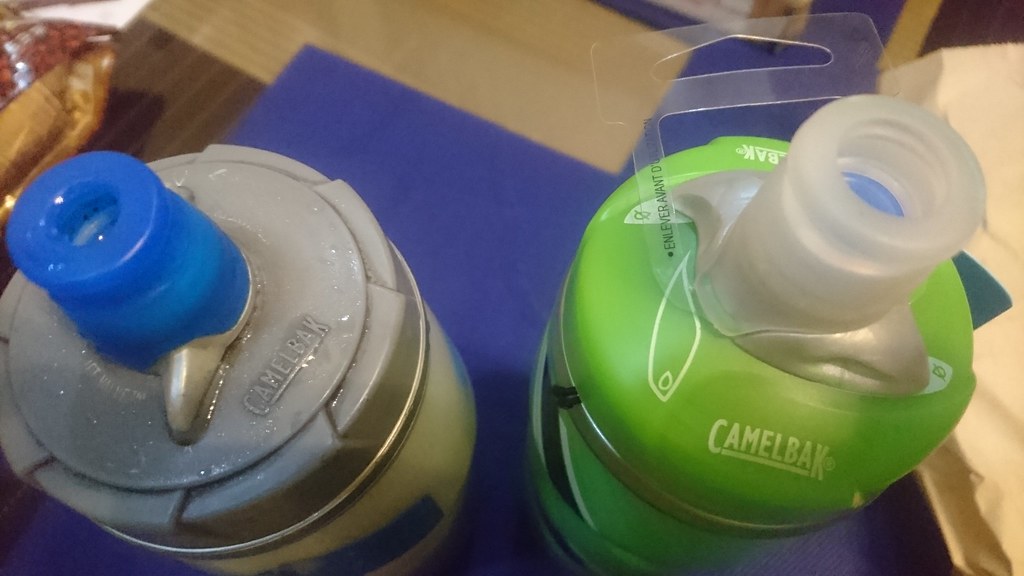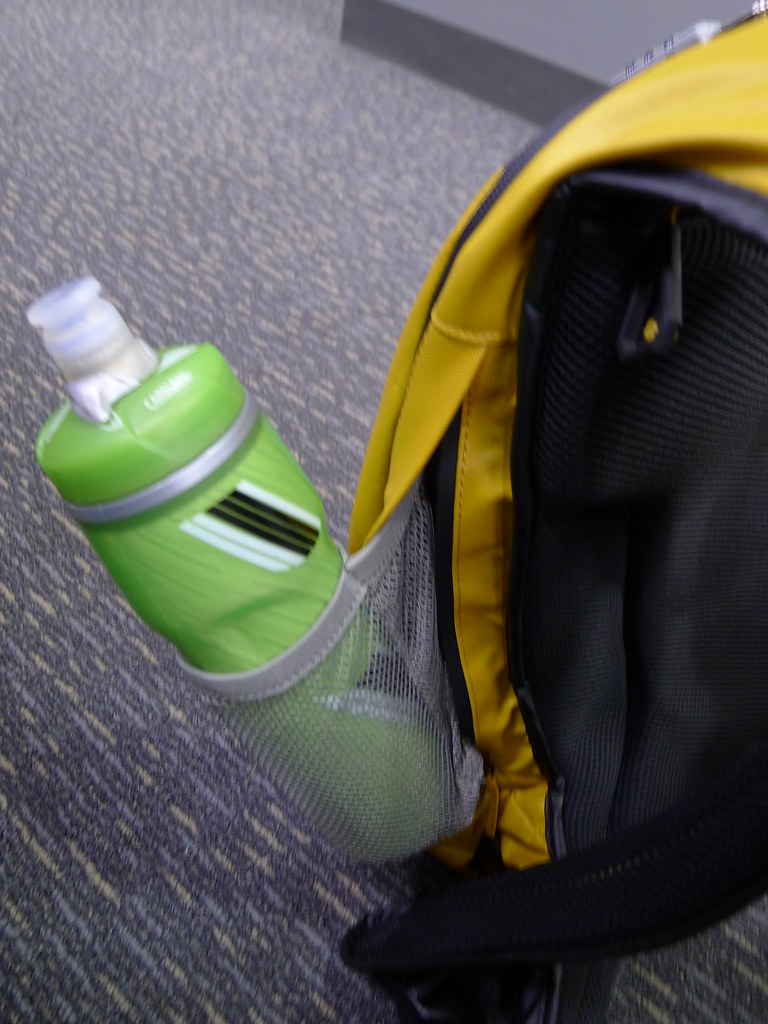For all the advancements we get in bicycle technology, often the most important things we reach for on our rides are decidedly low-tech. One of those things is the humble water bottle (or “bidon”, if you’re a cycling purist/snob). Its main function is to help you carry enough water aboard your bike to keep you hydrated.
That said, it’s not as if the humble water bottle can’t be improved. Camelbak initially went about dispensing with the water bottle altogether by popularizing the concept of hydration backpacks, where a bladder filled with water or your fluid of choice served your hydration needs via a bite valve. Later on, though, after hydration packs found their home on the backs of mountain bikers, they did an about-face and innovated on the water bottle itself, to serve the road cycling crowd.
The result is the Podium bottle. So popular and functional is this thing that it’s often an unsung hero in the professional cycling peloton. Today I’m going to take a look at what I feel is its most useful variant, the insulated Podium Big Chill.
FEATURES
- Capacity: 25 fluid ounces (750 mL)
- Insulating material helps keep liquids cool or warm
- Leak-proof Jet Valve spout delivers liquid only when bottle is squeezed
- Mechanical spout lockout for extra security against leaks
- Price: Around PhP700
IMPRESSIONS

Podium Big Chill bottle: First generation blue on the left, second generation green on the right
I’ve been cycling long enough to have had two generations of this bottle, and there are reports of a third generation Podium launching in the near future.
Both bottles’ landmark feature is the Jet Valve spout. This works in conjunction with the squeezable body of the bottle, and opens only when the bottle is squeezed. It’s essentially a gate activated by air pressure. What’s really impressive is that, without the pressure differential of a bottle squeeze, the Jet Valve remains shut with zero danger of leaking its contents. It’s so effective, the mechanical lockout for the spout isn’t really needed 90% of the time, but it’s there when you need to, say, stow a loaded bottle inside a bag with other contents.
Equally impressive is the thermal insulation used on the Chill and Big Chill variants. You’d think the insulation would be bulky and get in the way of the whole squeezing function needed to activate the Jet Valve, but nope – it’s pliable and it does a good job of insulation.
The first-generation Podium Big Chill has a pronounced taper in the middle to aid squeezing and facilitate secure mounting in a bottle cage. Between the two bottles, it’s got the smaller Jet Valve spout, although it’s still up to the task of delivering water to a thirsty cyclist’s mouth. I like the mechanical lockout on the older bottle better: it forms an “X” when turned to the closed position, which is an easier visual reference. It is also easier to disassemble the spout into its components for cleaning.
Around 2014, Camelbak introduced a bunch of improvements to the Podium bottle series. Foremost of these is a larger diameter spout and Jet Valve. It’s now almost twice as large as the original, improving the flow rate for every squeeze of the bottle.

The second-generation Podium bottles have a spout almost twice the diameter of the original.
That said, it isn’t perfect. The mechanical lockout isn’t as intuitive to use; gone is the “X for closed” design of the original. Also, disassembling the spout for proper cleaning of built-up dirt is a little more involved and carries much more risk of damaging the Jet Valve. Opening and filling liquids is easier on the older bottle, as the ridges on the screwed-on cap are more defined. Lastly, the larger diameter also improves the odds of dust, dirt, and gunk making it into the spout in the first place, so try to find a spout mud cap if your ride carries the risk of contaminating your bottles.
What really improved in the second-generation design was the insulation. Before I embark on a long ride, my standard practice is to fill my bottles 2/3 full of water, then store them on their side at a slight angle in the freezer. In the morning, they should have a tall piece of ice to help keep my water cooler for longer.
It is during these longer rides that the differences in insulation are really evident. Prepared as above, the older Podium Big Chill can keep its water cool for around 2.5 hours. By contrast, the second-generation bottle extends this to around 3.5 hours – which is why I normally use it as my reserve bottle. That said, the newer bottle is also a little fatter, with less of a defined middle notch for a bottle cage to “bite” into…that’s probably a penalty for the better insulation.
VERDICT
I’ve tried other insulated bottles, and they’re not even a patch on the original Podium Big Chill. Camelbak has a definite winner here. Mine are scratched up and slightly dirty from all their time in my bottle cages, but they’re still going strong. As long as you can take care of the Jet Valve and keep the spout clean, these water bottles can last you a long, long time – and can find lots of use even off the saddle.

